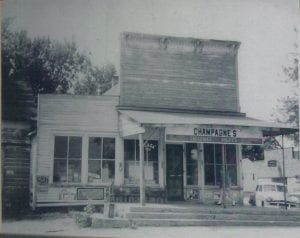The Mystery of the 2 Holes at Rush Lake In Huron County
Mysterious holes are found by kids on the north side of Rush Lake State Game Area. Years later they are determined to be from the 1800s quarry operations.
News & Fun in Michigan
 We examine stories and events that shaped the history of the Upper Thumb and Michigan. While we focus on the Thumb region, other Great Lakes historical events are covered. Major events include the lumbering era and the 1871 and 1881 great fires. We cover major pioneers and personalities that shaped the region. To hear many of our best stories, visit and subscribe to our Podcast, “The End of the Road in Michigan.”
We examine stories and events that shaped the history of the Upper Thumb and Michigan. While we focus on the Thumb region, other Great Lakes historical events are covered. Major events include the lumbering era and the 1871 and 1881 great fires. We cover major pioneers and personalities that shaped the region. To hear many of our best stories, visit and subscribe to our Podcast, “The End of the Road in Michigan.”
Our best Michigan history posts are found below.
Mysterious holes are found by kids on the north side of Rush Lake State Game Area. Years later they are determined to be from the 1800s quarry operations.
The mural in Caro’s Post Office; Mail on the Farm was done in 1941 by Michigan artist David Fredenthal. Its one of five worked commissioned by the Department of the Treasury during the Great Depression.
Minden City Herald Editor Nathan Marks published a great article about the 1947 snowstorm that absolutely walloped Michigan’s Upper Thumb. It’s an interesting bit of history that many don’t know about.
There is a long history with reports of UFOs over Michigan. The Minden City Herald has collected 10 reports of activity over Michigan’s Thumb.
Short history of Charles Learned, the builder and Huron County pioneer who build the Garfield Inn and was friends with a US President James Garfield.
Sebewaing had a thriving shipbuilding and lumber shipping capability in its narrow harbor in the 1800s
We like to explore estates and mansions in the United States. Amazingly Michigan has 4 of the top 13 on this list of estates where one can tour the property.
Charles Lindbergh’s 20-month-old son was kidnapped on March 1, 1932. The news shocked and gripped the entire nation, with updates occurring almost every week in newspapers, including the Harbor Beach Times in Michigan’s Upper Thumb